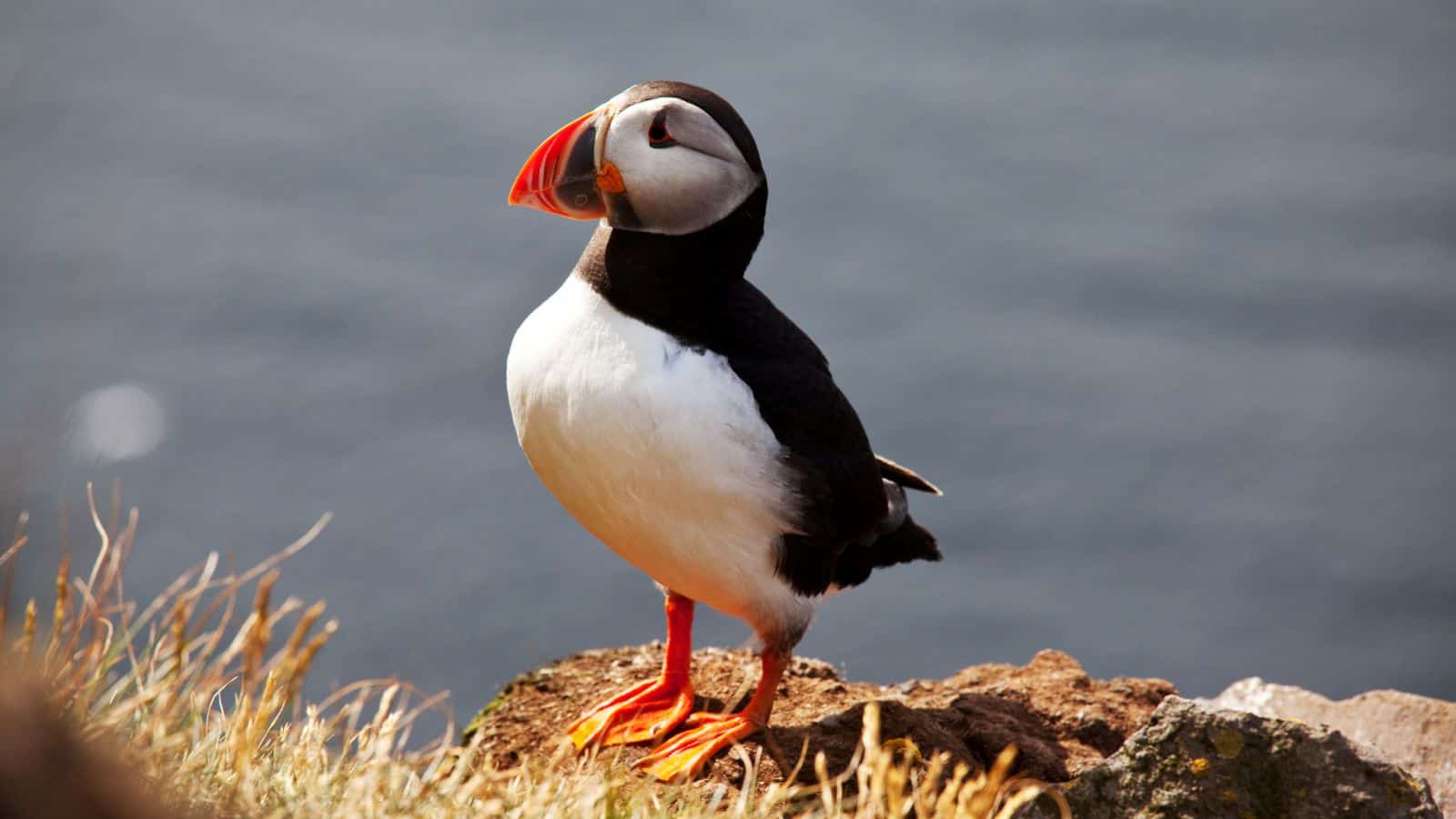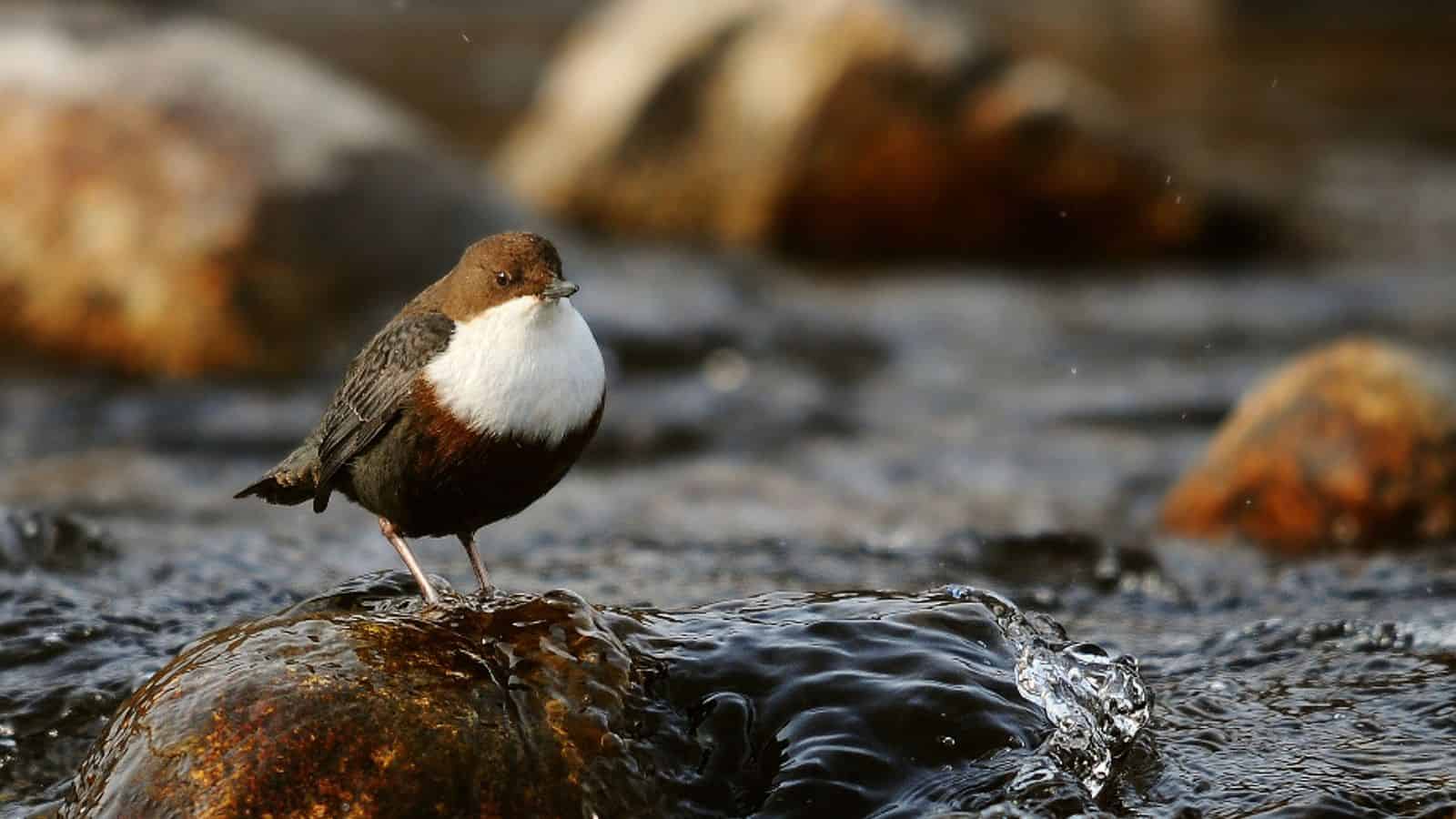There’s no doubt that birds are astonishing in their adaptations. Some, such as swifts, spend almost all of their time in the sky. Others, like emus, can’t fly but can outpace most mammals when running on the ground.
But several birds have mastered the water element, too. While some fishing birds, like kingfishers, are poor swimmers, others can rival many sea creatures with their underwater agility.
But exactly which birds can swim underwater? Here, we’ll take you through 11 fascinating water birds that can swim underwater with ease and elegance. See how many you can guess before scrolling down!
Birds That Swim Underwater
Penguins

Penguins are not only one of the most famous water birds in the world, they’re also the most adept swimmers. With powerful, streamlined bodies, the Gentoo penguin (Pygoscelis papua) can swim at speeds of up to 22 mph, making it the world’s fastest swimming bird.
But the prize for the deepest dive goes to the largest, and perhaps most famous penguin of them all. Emperor penguins are the stars of the hit nature documentary ‘March of the Penguins’ and can dive to astonishing depths of 1,850 feet!
You’d be right if you’re thinking they’d need to hold their breath for a long time to reach that depth. In 2018, scientists monitoring Emperor penguins recorded a maximum dive time of 32.2 minutes underwater!
This is almost three times longer than the human world record breath hold underwater of 11:35 minutes by Stéphane Mifsud in 2009.
Brünnich’s Guillemot or Thick-Billed Murre (Uria Lomvia)

So now we know that Emperor penguins are the deepest diving bird in the world, but what about flying birds?
The ‘thick-billed murre’ or ‘Brünnich’s guillemot’ (Uria lomvia) holds the world record for the deepest dive of any flying bird at 690 ft. Beating their wings to swim underwater, these birds dive for up to 4 minutes at a time to catch their favorite fish and marine invertebrates.
Despite their short wingspan, Thick-billed murres are adept in the air, too. Often traveling more than 60 miles across land and sea, these birds aren’t afraid to put the extra distance in to reach their favorite fishing grounds!
Scientists are mystified as to how diving birds manage to avoid diving sickness and lung collapse when resurfacing from long dives like human divers do. It’s been theorized that birds like guillemots temporarily absorb excess gasses into the vascular structure of their bones before gradually decompressing later.
Brünnich’s guillemot is one of the most common seabirds in the Northern Hemisphere and nests in colonies of thousands or even millions of birds. They hold a second world record for occupying the smallest nesting territory of any bird – requiring less than a square foot for each individual!
Gannets

One of the most iconic of all diving birds is the gannet, a large seabird with a wingspan of over 6 feet across.
Folding their wings from a great height, gannets descend to the water like feathered torpedos. They can be traveling at around 60mph by the time they hit the water, where they then can pursue fish by flapping their wings to swim.
Gannets have had to evolve several special features for this high-velocity diving strategy. Their nostrils are located inside of their mouth rather than on the sides of their beaks, and they have air sacs in their face and chest that cushion the impact of their entry into the water.
Like many water birds, they also have waterproof feathers. Check out the gannet’s incredible diving abilities in this video!
Cormorants

If there’s a bird that eats even more fish than a gannet, it might be the cormorant. A diverse family of fishing birds, there are approximately 40 species of cormorant (in comparison, there are just three types of gannet).
These medium-large water birds can weigh as little as 12oz in the case of the pygmy cormorant, to a weight of 11lb in the flightless cormorant. Cormorants are generally dark-colored birds and some believe their Latin name to come from the Latin ‘Corvus marinus’ meaning ‘sea raven’.
While most cormorants inhabit coastal waters, some species can be found fishing on inland rivers and lakes, too. Cormorants are famous for holding their wings out in the sun after their fishing escapades to dry their feathers.
Modern technology has allowed scientists to strap tiny cameras onto cormorants and their cousins, the shags, to learn more about their underwater feeding habits. They feed on all manner of fish, eels, and even water snakes.
Pelicans

Now if you thought that gannets were big diving birds, wait until you hear the colossal proportions of the pelican!
With wingspans sometimes exceeding 11 feet across and weighing up to 33lb, the Dalmatian pelican and Great White Pelicans are two of the largest flying birds in the world. Rivaled only by swans, bustards, and condors, these enormous birds are a sight to behold!
To sustain such large bodies, pelicans need to eat a lot of fish. Dalmatian pelicans and Great White Pelicans are known to sometimes eat more than 4 lb of fish in a single day!
These expert hunters tend to hunt by paddling along quietly at the water’s surface. When they’ve closed in on their prey, they then plunge their head and neck into the water at formidable speed, gulping down their target with masses of water which then drains from their famous pouches.
Pelicans will also sometimes dive from above the water to catch fish and are also known to feed cooperatively with one another by corralling fish into shallow waters. When there are too many fish to swallow, they’ve been known to store fish in their pouch for dining later!
Ducks

A list of diving birds wouldn’t be complete without ducks, but did you know that not all ducks are considered true divers? In fact, the duck family can be broadly divided into those that can dive and those that merely ‘dabble’.
Dabbling ducks include species such as mallards, wigeons, pintails, and teals. Instead of diving, these waterfowl feed primarily by ‘tipping up’ while floating on the water’s surface. Dabbling ducks have broader wingspans and so can usually take off from the water without running.
Diving ducks are more diverse and include species like scoters, goldeneyes, scaups, and mergansers. Some species of eiders and long-tailed ducks can even dive to over 180 feet deep!
Because their wings are built for swimming rather than flying, diving ducks have a shorter wingspan than dabbling ducks and so usually need to run on the surface of the water before taking off.
Diving ducks use their webbed feet to hunt their prey with speed and power. They feed on a variety of foods including aquatic insects, worms, weeds, mollusks, and crustaceans.
Puffins

It’s hard to find a bird lover who isn’t smitten with puffins. Looking like an exotic creation from a mythical story, the brightly colored bills and ornate eye lines of these ‘sea parrots’ look like they’ve been painted by an imaginative artist.
People are often so enamored by the puffin’s appearance that they might forget to ask how they sustain themselves. Puffins eat both fish and zooplankton, but mostly feed their chicks, (known as ‘pufflings’), with small fish. Puffins are excellent swimmers, and a special adaptation in their beak allows them to carry over a dozen fish in their bills at a time.
Puffins mate for life, nest in burrows, and sometimes fly as far as 30 miles to catch fish for their young. As they return from their fishing expeditions, they are frequently robbed of the fish hanging from their bills by larger sea birds.
You can witness puffins ducking and dodging gulls and guillemots on their way back from their fishing trips in this extraordinary footage captured on film here.
Dippers

Judging from appearances, you might wonder what the dipper is doing on our list of birds that can swim underwater. This little bird may look more like a thrush than a diving bird, but appearances can be deceptive, and dippers didn’t earn their name for nothing!
Sitting on rocks beside clear rivers and streams, dippers wait for aquatic insect larvae or small fish to swim by, before diving in to catch them. An even more extraordinary hunting strategy deployed by the dipper is literally walking along the bottom of the river bed in search of their prey!
In the spring, dippers form beautiful nests beside waterways out of moss and dead plant stems. Once their chicks have hatched, the parents work tirelessly to gather food from the water to feed their young.
The round, plump shape of dippers allows them to survive at surprisingly low temperatures. It’s not unusual to see them diving into rivers that are partly frozen over during the winter months!
Shearwaters

Shearwaters are widespread seabirds belonging to the petrel family. Although their distribution is global, they’re most frequently found in temperate and cold waters.
Like puffins, shearwaters nest communally in burrows, usually on islands or on cliffs where they’re better protected from predators. They lay a single white egg, so invest all of their efforts in raising one strong and healthy offspring.
When they’re not nesting, however, shearwaters are pelagic, meaning they reside away from land, entirely on the open sea!
Shearwaters feed on fish, squid, and other seafood. Their favorite fishing technique is diving, and some species can reach depths of over 200ft. They’ll also sometimes follow whales and fishing boats in the hope of scavenging scraps or injured fish.
Terns

Terns are a cosmopolitan family of birds that hunt for fish not only in the sea but in rivers and lakes, too.
With an elegant, slender shape, terns are purpose-built for being fast, agile hunters. While some species of tern feed on insects in marshlands, the types that swim in the sea are collectively known as ‘sea terns’.
Like other diving birds, sea terns have special adaptations in their eyes that allow them to better spot fish from above the water. But because they can’t see clearly once they’re in the water, they’re often seen hovering in the air, gauging their target before folding their wings and diving in.
Sea terns regularly hunt in association with large marine predators like dolphins and predatory fish, waiting for smaller fish to be driven to the surface where they can be snatched up more easily.
Sadly, most tern species are declining due to the loss of breeding habitats, pollution, and the rising seagull population. Because gulls have increased over the last century, terns have been forced out of many of their former nesting territories by these larger birds.
Thankfully, a few types of tern, such as the Arctic tern and Forster’s tern are defying the trend by showing local increases in numbers.
Albatrosses

Most folks are familiar with the lovable albatross family, a clan of enormous sea-faring birds with endearing personalities. These widespread birds can be found from North America to Antarctica.
But did you know that albatrosses are diving birds, too? Until recently, scientists assumed that albatrosses gained most of their sustenance from surface fishing and scavenging fish and squid washed up on ocean currents.
But by attaching depth recorders to albatrosses, scientists have determined that some species, such as the light-mantled albatross can dive to depths of 40 feet to catch prey! They’ve also been seen plunge-diving from the sky when hunting fish.
The largest member of the family, the wandering albatross (Diomedea exulans) has the largest wingspan of any bird in the world, measuring 12 ft from wing tip to wing tip.

